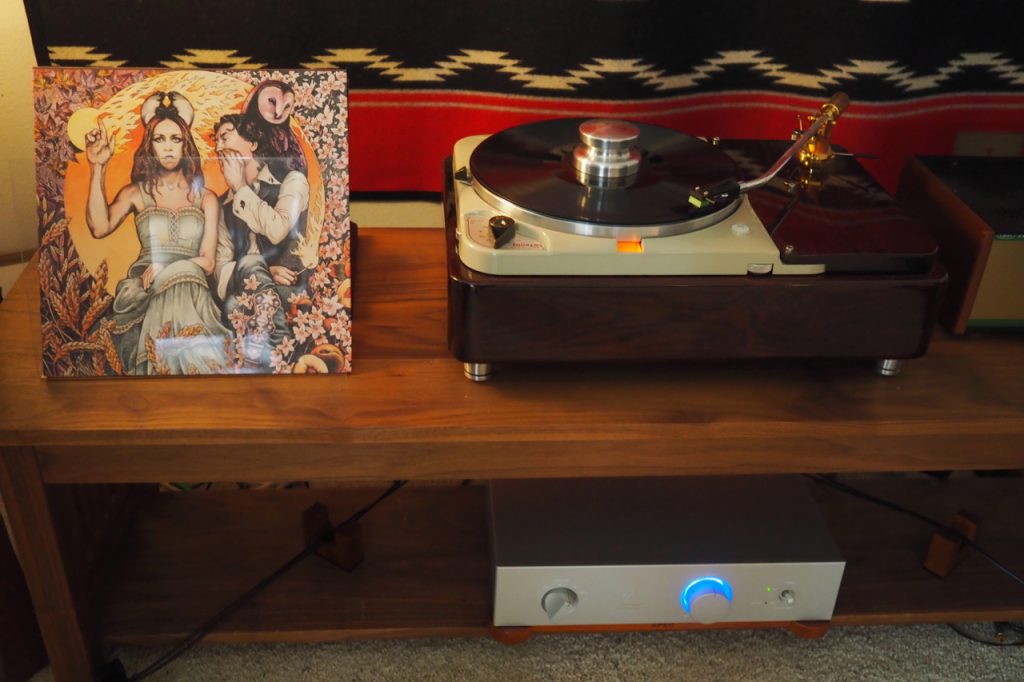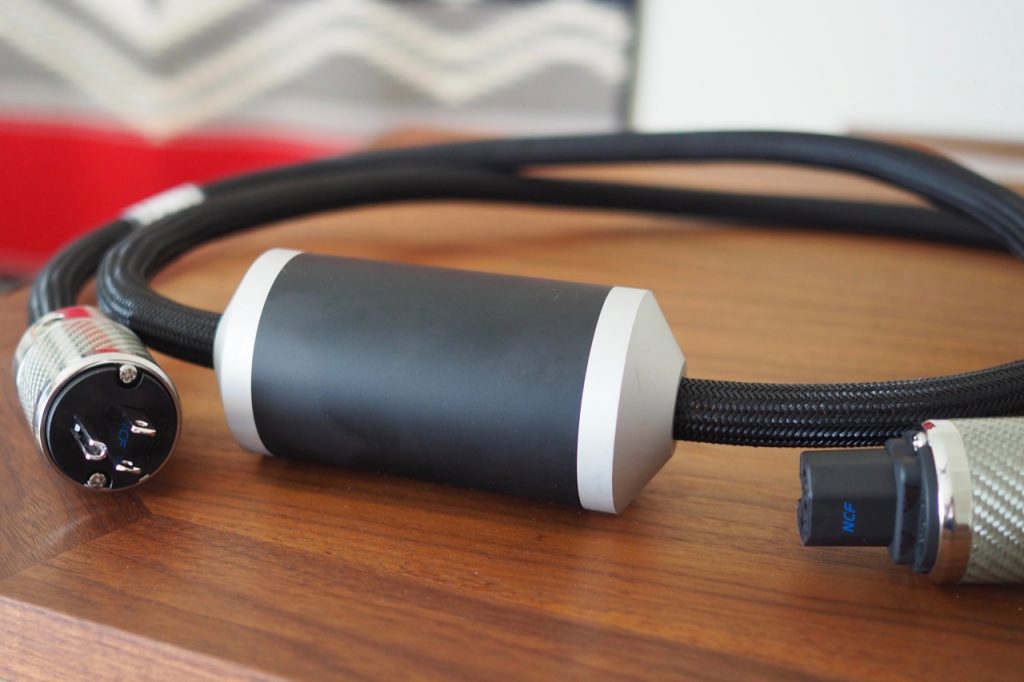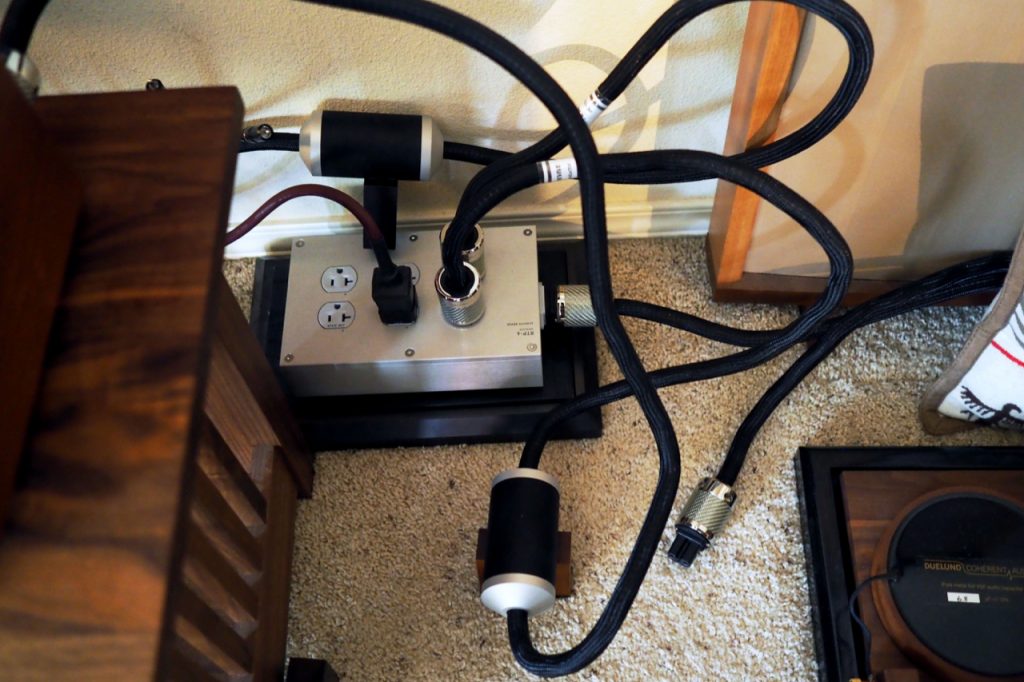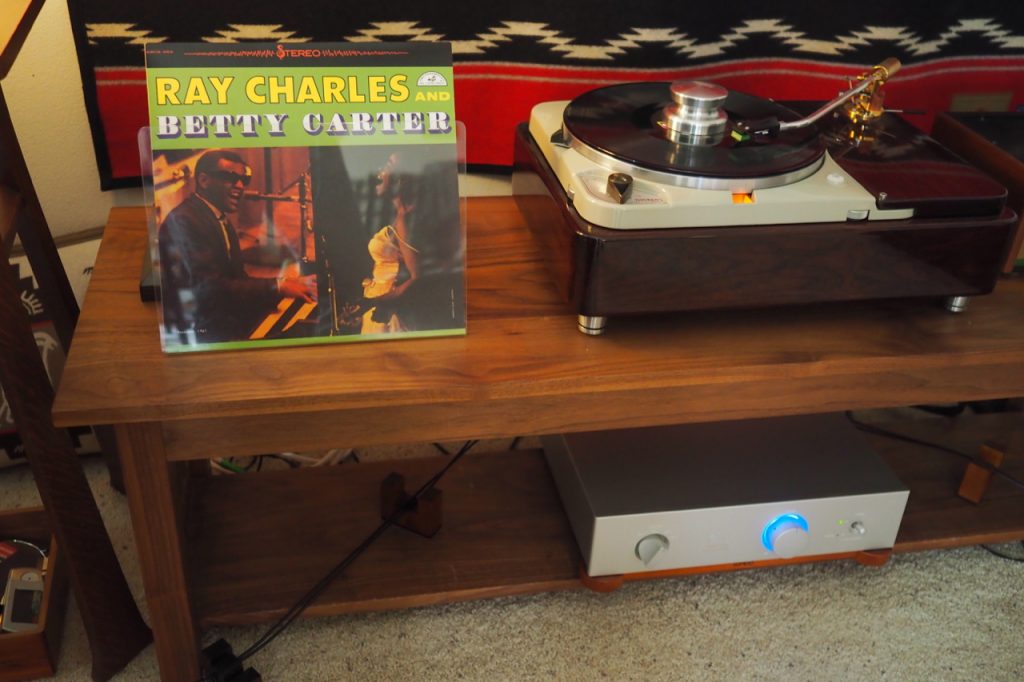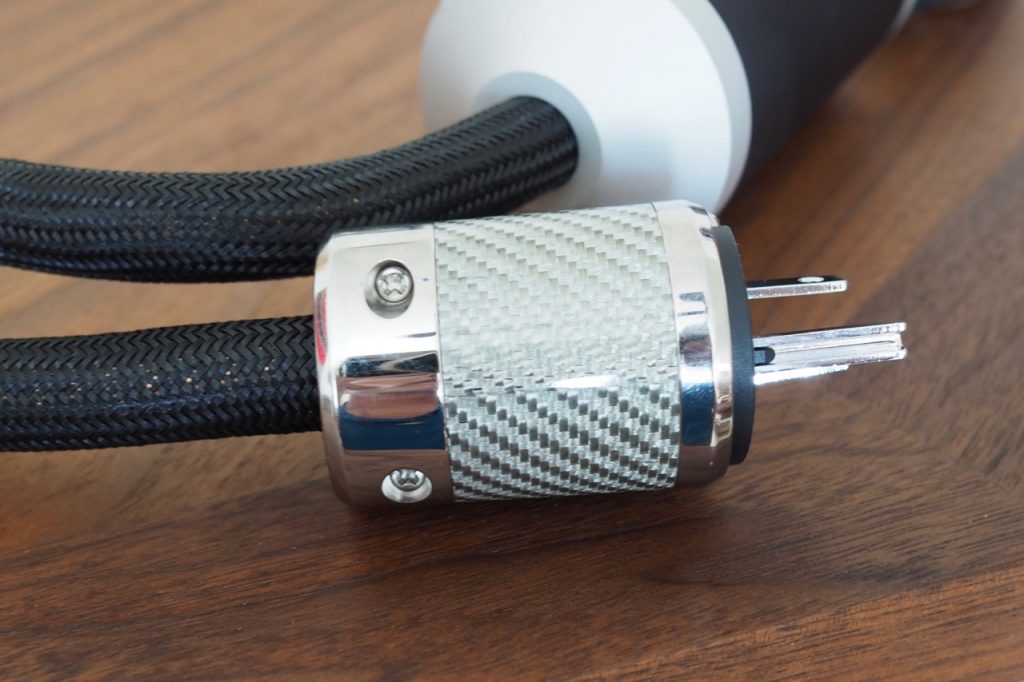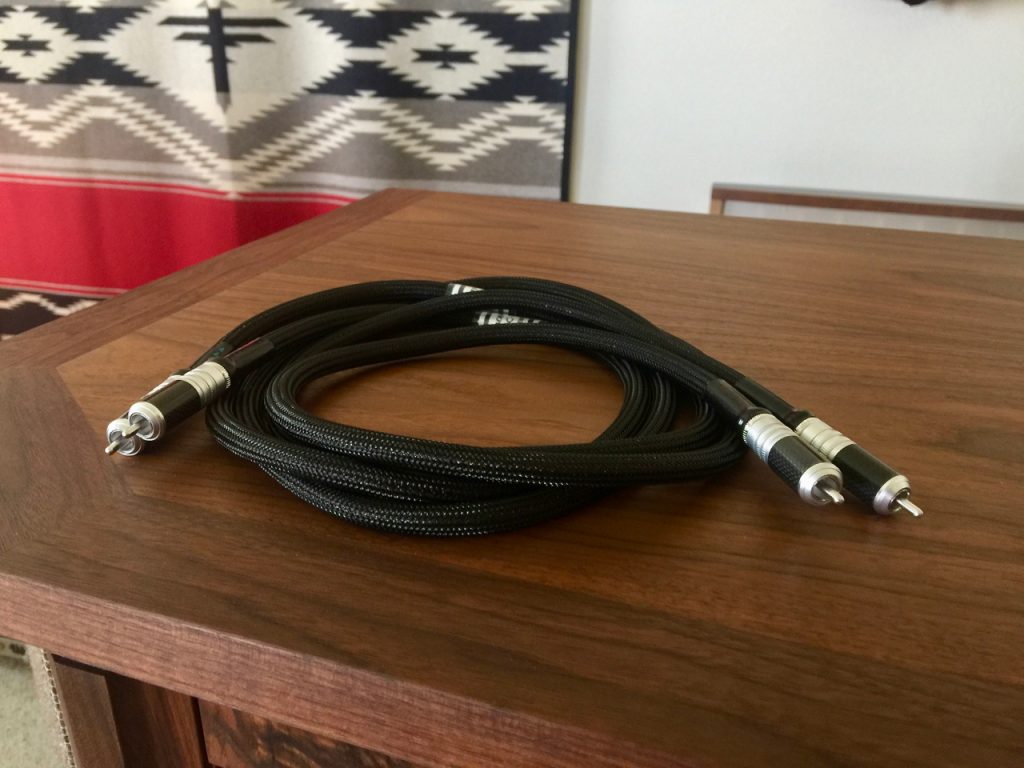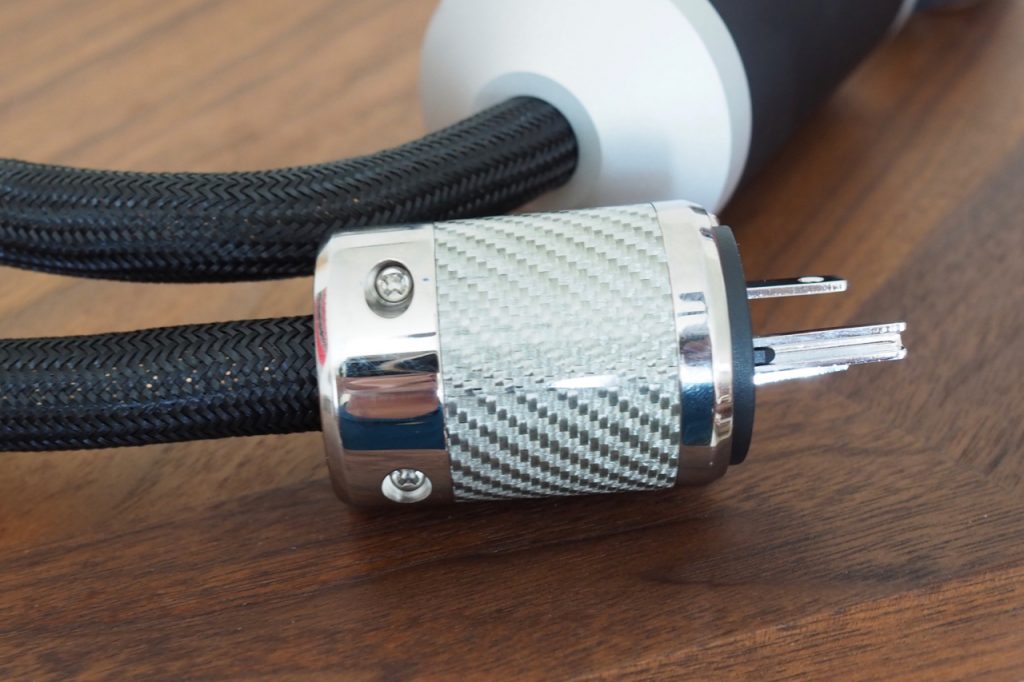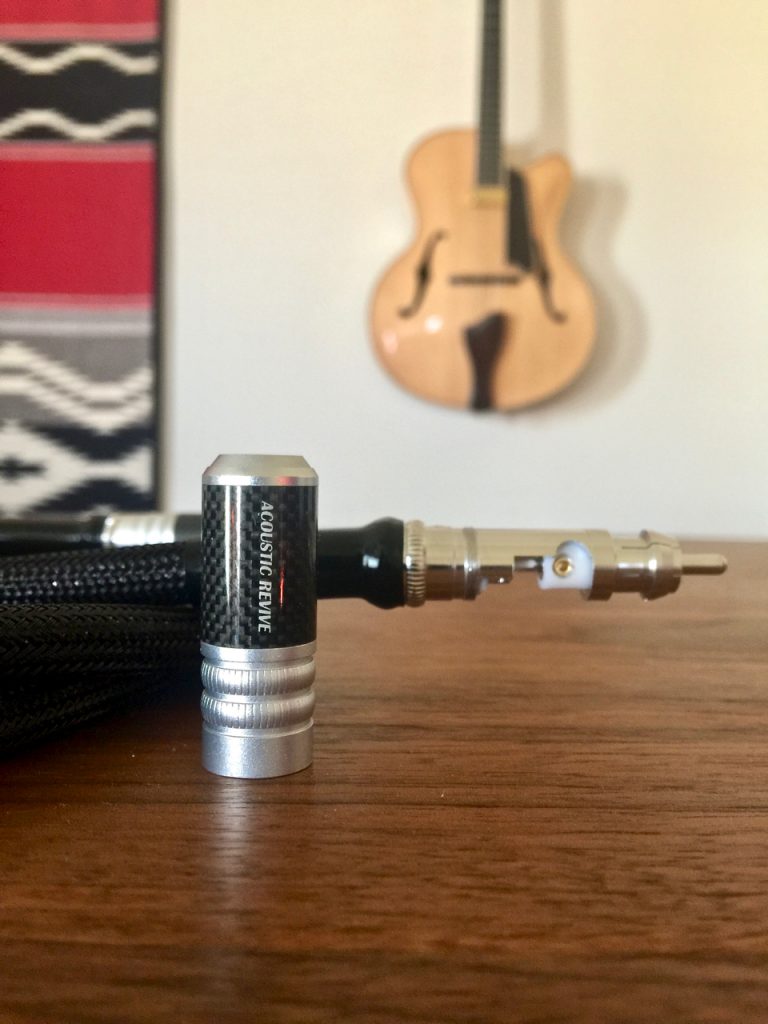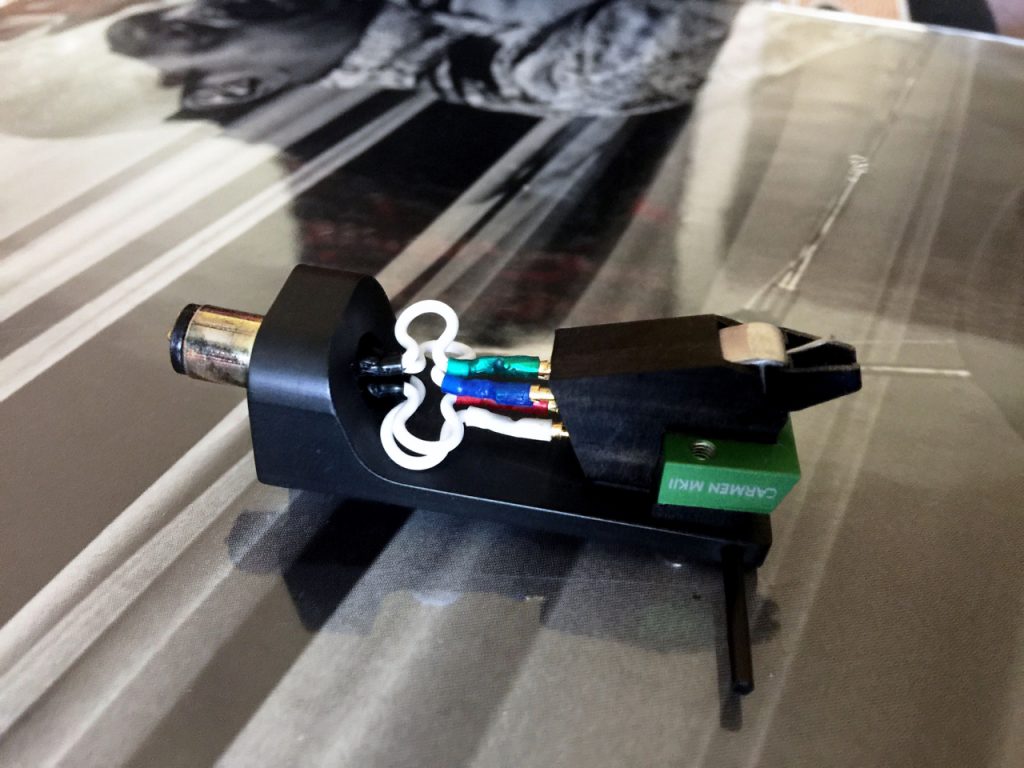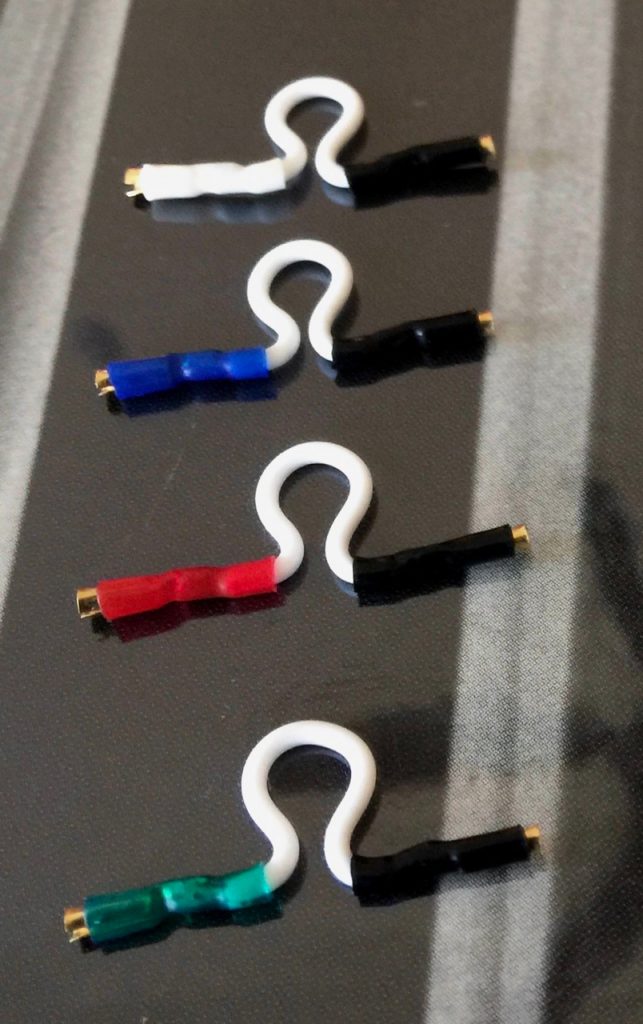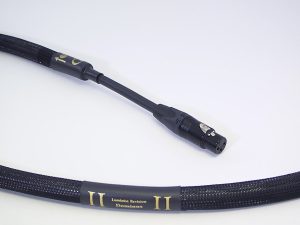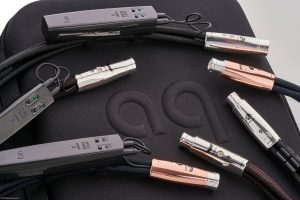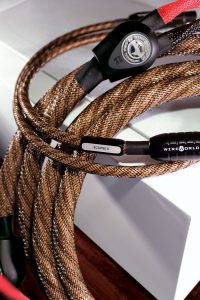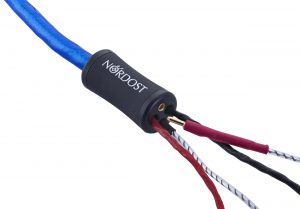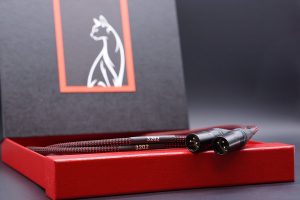Gillian Welch's The Harrow & The Harvest (Acony Records ACNY-1109LP) continues to delight me in listening. I love its dark and melancholy folky vibe, beautiful vocals and harmonies, and terrific guitar playing by David Rawlings and Gillian. It doesn't hurt a thing that the recording quality is superb, and that combined with their fantastic songwriting skills and playing makes The Harrow & The Harvest a must have album.
The Acoustic Revive RCA Absolute FM Interconnects sound ravishingly beautiful on The Harrow & The Harvest, with tone to die for, timbre to applaud, and an articulation of nuance that is really superb.
David Rawlings sophisticated jazzy guitar playing was as present and perfect as I could ask for, almost as if he was in the room with me playing, and ditto for Gillian's rhythm playing. I was really geeking out listening to Rawlings melody lines, admiring his great tone as a player, and the nuance of dynamics in his technique, all of which the Acoustic Revive RCA Absolute FM Interconnects made incredibly engaging to listen to.
The Acoustic Revive RCA Absolute FM Interconnects have superb sonics in spades, with imaging, soundstaging, resolution, transparency, and a big airy sense of space that is unparalleled in my experience. The Acoustic Revive RCA Absolute FM Interconnects have evolved considerably in sonic performance compared to the previous top-of-the-line Acoustic Revive Single Core PC-TripleC RCA interconnects.
Even more important to me is that their level of musicality is also extraordinary, and in fact, this is where the Acoustic Revive RCA Absolute FM Interconnects have particularly evolved compared to the Acoustic Revive Single Core PC-TripleC RCA interconnects, and I applaud Mr. Ken for taking them in this direction of enhanced musicality as well as enhanced sonic performance.
Far too often designers try to wring every last drop of transparency and resolution out of interconnects and/or speaker cables at the expense of musicality, and while that can sound impressive for a short listen, after a while it wears on me.
As you will find out in a moment, this move in the direction of enhanced musicality is also true of the new statement Acoustic Revive Absolute Power Cord.
Acoustic Revive Absolute Power Cord
As I mentioned earlier, the new Acoustic Revive Absolute Power Cord is similar to the Power Reference TripleC NCF AC power cords that I reviewed in Issue 91, with the most obvious difference being the addition of the Degawa method MD unit that surrounds the cable at its mid-point.
I love Mr. Ken's creativity in coming up with ingenious ideas to improve audio performance, and the Degawa method MD unit is a case in point.
The Degawa method MD unit that encircles the cable at mid-point of the Absolute Power Cord changes the performance quite a lot more than I was expecting, compared to the Acoustic Revive Power Reference TripleC NCF AC power cords on their own, which have been my reference power cords in my Altec A5 Voice of the Theatre audio-visual system since their review.
The new Absolute Power Cords have been getting lots of run-in time in my Altec Corona 832A based system, as well as in my Altec A5 Voice of the Theatre based system, and much like the Acoustic Revive RCA Absolute FM Interconnects, they were impressive right from the start and only continued to improve as they got more time on them.
For this review, I used the new Acoustic Revive Absolute Power Cords for the following AC connections: to connect from the wall AC to the Acoustic Revive RPT-6 Absolute NCF Power Distributor, and to connect from the RPT-6 Absolute NCF Power Distributor to the Leben RS-30EQ valve phono preamplifier and the SPEC RSA-M3 EX Real Sound Amplifier. Additionally, my Thorens TD124 turntable was connected to the RPT-6 Absolute NCF Power Distributor with a RAS-14-TripleC NCF Power Stabilizer.
As with my comments comparing the performance of the new Acoustic Revive RCA Absolute FM Interconnects to the Acoustic Revive Single Core PC-TripleC RCA interconnects, I thought it would be helpful in particular for the owners of Acoustic Revive Power Reference TripleC NCF AC power cords to know how their sonic & musical performance compares to that of the new Acoustic Revive Absolute Power Cords, in case they're considering upgrading.
For a baseline, let me repeat part of what I said about the Power Reference TripleC NCF AC power cord (above) compared to the standard Power Reference AC power cord in their review:
"So, to sum up, with the addition of the Power Reference TripleC NCF AC power cord, there was more resolution, more fine detail, a more spacious soundstage, and more presence & body from images of instruments and vocals.
"The Power Reference TripleC NCF's increased resolution, articulation of more fine detail, also provided an enhanced sense of tone color specificity (those alterations of a three-note triad you get by adding additional pitches, as with the major & minor 6ths, major & minor 7ths, dominant 7ths with flat or sharp fives or nines, major & minor & dominant 9ths, 11th, augmented 11th, 13th, etc.), that give life and meaning to the different styles of music and the emotional connections that go with them.
"The Power Reference TripleC NCF AC power cord also improved the presentation of beat, tempos, and dynamics, and in particular I noticed there was more bass note resolution & articulation.
"With the Power Reference TripleC NCF AC power cord the music also became more natural, warm, and rich sounding, and gave me a greater emotional connection to the music."
In other words, the Acoustic Revive Power Reference TripleC NCF AC power cord had quickly become my favorite power cord for their canny balance of sonic prowess and musicality, but how did the new Absolute Power Cords compare to the already über performing Acoustic Revive Power Reference TripleC NCF AC power cords?
Let's listen to a little music to find out!
It's a couple of weeks before Christmas as I write this, with the first traces of snow coming down outside. During the run up to Christmas I always enjoy spinning holiday vinyl from Bing Crosby, Frank Sinatra, Amy Grant, Zooey Deschanel, and others, with the fireplace casting a cheery glow into the room, and with my hand being warmed by a piping hot Tom & Jerry drink.
One of those "other" albums I enjoy listening to during the Holidays is that classic album, Ray Charles and Betty Carter, which is a nice collection of jazz standard love songs. My version of the 1961 album is the remastered Analogue Productions (APP-385) LP, which is truly exceptional.
Every song is superb, and in particular I enjoy that silly ol' romantic song "Baby It's Cold Outside" that Ray and Betty do as an unforgettable duet—my favorite version of it.
I'm old enough to understand the context of "Baby It's Cold Outside," so I was a little surprised when I'd first heard from my younger girlfriend that this silly romantic song was being referred to as a date-rape song, and that people were actually trying to get it banned from radio stations. I was appalled!
Apparently some well-meaning but misguided individuals, that lacked the understanding of the song's original context, had labelled it as a date-rape song, and the resulting battle of emotions and air-play still rages over "Baby It's Cold Outside" as to whether it should be banned from the radio.
Written by Pulitzer Prize winning Broadway musical song writer, Frank Loesser, in 1944, for he and his wife to sing at parties to entertain guests, this silly romantic song quickly became popular on the radio and in movies, went on to win an Oscar, and became a staple of Holiday music on the radio.
Recently, Susan Loesser (Frank Loesser's daughter) and Karen North (USC communications professor) came out in defense of the song, and tried to correct some of the misconceptions about it an interview with NBC (which you can read HERE).
But enough about that, let's get back to the terrific music of Ray Charles and Betty Carter and explore how the new Acoustic Revive Absolute Power Cord compares to the previous top-of-the-line Acoustic Revive Power Reference TripleC NCF AC power cord.
Betty Carter (vocals) and Ray Charles (vocals & keyboards) are joined by Hank Crawford (alto saxophone), David Fathead Newman (tenor saxophone), Leroy Cooper (baritone saxophone), Bill Pitman (guitar), Edgar Willis (bass guitar), Mel Lewis and Bruno Carr (drums), and The Jack Halloran Singers (background vocals).
With the new Acoustic Revive Absolute Power Cords providing all the AC needs, Ray Charles and Betty Carter, sounded gorgeous, with Ray's rich and smoky vocals, Betty's delicate vocals, snappy drum hits, and a great portrayal of beat, melodies, and tempos that kept my foot tappin' to the music.
Soundstaging was superb, with rock-solid images spread across the breadth and depth of the stage, with lots of interesting and relevant musical nuance emerging out of the music that really added to the musical experience.
The overall tone was really superb with the new Acoustic Revive Absolute Power Cords providing all the AC, timbre was spot on, tone-color was easily discernible, and the overall emotive experience was luxurious and captivating. Truth be told, I played this album through a half of dozen times I was enjoying the experience so much!
After swapping out the Absolute Power Cord connecting the RPT-6 Absolute NCF Power Distributor to the wall AC for the Power Reference TripleC NCF AC power cord, I gave Ray Charles and Betty Carter another listen.
Given the two power cords are the same with the exception of the Degawa method MD unit that slides over the AC cable, I wasn't expecting such a large difference between the two, but it quickly became apparent that the Degawa method MD unit isn't just hype, it makes a significant improvement in performance to what has been up to this point my favorite AC power cable, the Acoustic Revive Power Reference TripleC NCF AC power cord.
While I could highlight the improved imaging, soundstaging, resolution, and other sonic traits the Degawa method MD unit delivers with the Absolute Power Cord, but what really improved—and really impressed me—was the overall musicality improvement with the Absolute Power Cord. Richer, more natural, improved portrayal of beat, melodies, and tempos, but most importantly, my emotional connection to the music was significantly enhanced.
In my listening notes, with the Absolute Power Cords in my hifi system, I started commenting more about how I felt emotionally while listening to the music, and a lot less about what I was hearing from an analytical perspective. The improvement to musicality, and my emotional connection to the music, was not subtle, it was a real ear and heart-opener!
I suspect hifi shops will have some good fun seeing the surprised looks on listeners' faces as they replicate swapping out the Acoustic Revive Power Reference TripleC NCF AC and Acoustic Revive Absolute Power Cords in listening demonstrations.
Summary and Conclusions
First let me address the elephant in the room, as these Acoustic Revive cables are astonishingly expensive.
The Absolute Power Cords in a 2-meter length are $11,950 USD, with additional length by quote. The RCA Absolute FM Interconnects are $11,950 USD for a 1-meter pair, and each additional 1/2 meter adds $5250 USD. The PC-TripleC/EX Headshell Leads are $1075 USD for a set.
If you have to mortgage the house to buy these, they're probably not for you. If your bank balance reflects a barely noticeable change after buying a full system set of these new Acoustic Revive cables, then these are tailor made for you, and I think you'll be absolutely delighted at the superb performance they offer.
Simply put, the extraordinary quality, innovation, fit & finish, and custom hand-crafted nature of the Acoustic Revive Absolute Power Cords and RCA Absolute FM Interconnects really impressed me. Not only are they technological wonders, they are works of audio artistry, with sonic & musical performance to match.
Ken-san has succeeded admirably in his goal to provide audio accessories that reproduce the music from recorded media without added artifice, or as Ken-san likes to say, "so that it sounds natural and not as though it is being played back over an electrical device. Only by listening to natural sound without electronic artifice can you hear what the artists intended."
As an audio reviewer I've watched a lot of audio designers continue to evolve their products sonic prowess at the expense of musicality, and you end up with audio products that have an unnatural synthetic "electronic" quality to them that will never cut it with listeners who are familiar with what live music really sounds like.
Not so with Ken-san. While his Acoustic Revive products have continued to evolve from a sonic perspective to ever higher levels of performance in terms of imaging, soundstaging, an expansive sense of space, resolution, and transparency, what I really appreciate about Ken-san's Acoustic Revive audio products is that they continue to evolve in musicality, those traits that make music sound and feel real, like natural sounding timbre of instruments and voices, or the realistic portrayal of beat, melody, rhythm, harmony, and dynamics, that is comparable to that of live music.
There are three very important factors that the Acoustic Revive Absolute Power Cords and RCA Absolute FM Interconnects do extremely well, and which are the holy grail of making recorded music playback in the home as emotionally impactful as live music – natural tone even at live-like SPL levels, a vivid live-like presence that makes you feel like the musicians are there in the room with you, and dynamic prowess from the softest (pianississimo) to the loudest (fortississimo) levels, as well as everything in between.
If you have very deep pockets, both the Acoustic Revive Absolute Power Cords and RCA Absolute FM Interconnects are really easy recommendations, and I suspect if you're lucky enough to be able to afford them, you'll be oohing and aahing about what they do for your hifi system for a very long time to come.
If you've never experienced high-performance headshell leads yet, the Acoustic Revive PC-TripleC/EX Headshell Leads will likely bowl you over with their impressive performance, and like the Absolute Power Cords and RCA Absolute FM Interconnects they are built to impeccable quality standards, and utilize exotic and innovative forged silver-copper conductors.
However, I give the Acoustic Revive PC-TripleC/EX Headshell Leads a little bit more of a conditional recommendation, as to get the best out of them your system will need to be to the neutral to warm part of the voicing spectrum, and if your system is lean or bright sounding you might not like what you hear.
Also, while the Acoustic Revive PC-TripleC/EX Headshell Leads are extraordinary with quality source material, if you listen to a lot of less well-recorded material from an earlier era, or a lot of beat-up old garage sale finds, they might not be the headshell leads for you.
I have noticed that as the Acoustic Revive PC-TripleC/EX Headshell Leads get more hours on them they have been more forgiving of lesser source material, so this aspect of their performance may be minimized over time after they get a lot of hours on them, but I would be remiss if I didn't mention these two points.
I would like to thank Mr. Ken Ishiguro (Acoustic Revive) and Mr. Yoshi Hontani (The Muson Project, exporter) for allowing me to write about the Acoustic Revive Absolute Power Cords, RCA Absolute FM Interconnects, and PC-TripleC/EX Headshell Leads for you here at Positive Feedback, it has been a truly illuminating and enjoyable experience!
For more information about Acoustic Revive products in the USA, please contact Mr. Joe Cohen at The Lotus Group.
For more information about Acoustic Revive products internationally, please contact Mr. Yoshi Hontani at The Muson Project.
A happy and joyous holiday Season to you all!
As always, thanks for stopping by Positive Feedback to read my reviews, and may the tone be with you!




